#scalablestorage
Explore tagged Tumblr posts
Text
#FlexibleWarehousing#WarehousingSolutions#SupplyChainManagement#Logistics#OnDemandWarehousing#EcommerceFulfillment#WarehouseAutomation#InventoryManagement#SmartWarehousing#ScalableStorage#FulfillmentCenters#WarehouseOperations#SustainableWarehousing#LogisticsSolutions#OrderFulfillment#SupplyChainOptimization#WarehouseManagement#GreenLogistics#StorageSolutions#ModernWarehousing#warehousity#4pl#warehouse#ecommerce#india#fulfillment#controltower#warehousing#supplychain
0 notes
Text
Enhancing Cloud Storage for AI Workloads - Lightbits Labs

How Lightbits Certification on Oracle Cloud Boosts AI-driven Efficiency
In today’s rapidly evolving digital landscape, the demand for high-performance, cost-effective, and reliable storage solutions is paramount, especially for AI-driven workloads. Lightbits Labs’ recent certification on Oracle Cloud Infrastructure (OCI) marks a significant milestone in cloud storage, bringing optimized storage capabilities that cater to AI’s unique needs for low latency and high-speed data access. Here’s how this development is set to reshape the handling of AI workloads, particularly for enterprises managing mission-critical applications and real-time analytics. The Need for Optimized Cloud Storage in AI Workloads AI workloads demand a robust infrastructure that can handle large volumes of data, process complex algorithms, and deliver insights with minimal delay. For companies operating in AI-heavy sectors such as finance, healthcare, and real-time analytics, latency can be a barrier, impacting the speed and accuracy of results. Traditional storage solutions may struggle to keep up with the sub-millisecond latencies required by high-intensity applications, which can result in inefficiencies, delays, and even operational risks. Lightbits Labs, a pioneer in NVMe® over TCP technology, recognized this gap and took steps to address it. With the recent certification of Lightbits on OCI, enterprises now have access to a cloud storage solution tailored to support AI and other data-intensive applications seamlessly. This certification opens new doors for enterprises needing high-speed, resilient, and scalable storage that can meet their AI demands without the high costs typically associated with high-performance storage options. Lightbits and Oracle Cloud Infrastructure: A Strategic Partnership Oracle Cloud Infrastructure (OCI) is renowned for its commitment to innovation, performance, and scalability. By certifying Lightbits Labs, OCI ensures that its clients gain access to Lightbits’ advanced storage capabilities, specifically optimized for AI workloads. This partnership aims to enable organizations to run latency-sensitive, input/output (I/O)-intensive applications on a platform that prioritizes speed, resilience, and scalability, all while maintaining operational efficiency. Key benefits include: - Cost-Effective Scaling: Lightbits on OCI allows organizations to scale dynamically based on workload demands. This elasticity is crucial for companies facing fluctuating data volumes in AI applications. - Superior Latency Management: With sub-millisecond tail latencies, Lightbits addresses one of AI’s most pressing challenges – reducing the delay between data retrieval and processing. - Seamless Integration: Lightbits’ compatibility with Kubernetes, OpenStack, and VMware environments enables companies to integrate the storage solution smoothly into their existing workflows. Benchmarks that Set New Standards One of the standout features of Lightbits’ certification on OCI is the impressive benchmark results, setting a new standard for cloud storage performance: - Random Read and Write Performance: In recent FIO benchmarks, Lightbits demonstrated 3 million 4K random read IOPS (Input/Output Operations Per Second) and 830K 4K random write IOPS per client on OCI, fully utilizing OCI’s 100GbE network card. This performance level is instrumental in supporting real-time analytics, machine learning model training, and other AI-intensive tasks that rely on fast data retrieval. - Sub-300 Microsecond Latency: For both 4K random read and write operations, Lightbits achieved sub-300 microsecond latencies, a feat that reduces operational delays, allowing AI models to retrieve and analyze data faster than ever before. These benchmarks highlight Lightbits' efficiency and power in a way that few other storage solutions can match, making it an attractive choice for enterprises that rely on AI-driven insights to make critical decisions. Real-world Applications and Benefits The real-world applications of this optimized cloud storage solution are expansive. For instance, financial institutions running risk analysis models or healthcare companies conducting diagnostic imaging require storage solutions that offer both speed and reliability. By implementing Lightbits on OCI, these organizations can expect faster processing times and more reliable storage solutions, empowering them to make timely and data-driven decisions. Another critical application is in e-commerce, where real-time customer behavior analytics play a role in targeted marketing and inventory management. With Lightbits on OCI, e-commerce businesses can harness fast data processing to drive their marketing campaigns and ensure stock availability, even during high-demand periods like holidays or flash sales. The Future of AI-driven Storage Solutions The partnership between Lightbits Labs and Oracle Cloud Infrastructure signals a transformative shift in cloud storage, one that places AI and high-performance computing at the forefront. As AI applications become more pervasive, the demand for ultra-fast, scalable, and resilient storage solutions will only grow. Lightbits' innovation in NVMe® over TCP, combined with OCI’s robust infrastructure, sets a strong precedent for future developments in the field, driving more efficient, accessible, and powerful storage options for businesses worldwide. With Lightbits Labs and OCI at the helm, organizations can now deploy and scale AI workloads with a higher degree of efficiency, cost-effectiveness, and operational speed. This collaboration offers a clear advantage for companies eager to harness the full potential of AI without compromising on storage performance, creating a promising outlook for AI-enabled business operations in the cloud. Read the full article
#AIworkloads#cloudoptimization#cloudstoragesolutions#data-intensiveworkloads#enterprisedatastorage#high-performancestorage#Kubernetesintegration#LightbitsLabs#lowlatency#mission-criticalapplications#NVMeoverTCP#OCIcertification#OracleCloudInfrastructure#real-timeanalytics#scalablestorage
0 notes
Text
Azure Data Lake Benefits
Azure Data Lake Benefits
Azure Data Lake is a highly efficient and scalable storage system that helps organizations store and manage large amounts of data in a secure and organized way. It is especially beneficial for businesses looking to utilize big data and advanced analytics.
Here’s why Azure Data Lake is valuable:
Scalability: It can store massive amounts of data without performance issues, making it ideal for businesses with rapidly growing data needs.
Cost-Effective: It offers affordable storage options, allowing organizations to store data without high infrastructure costs.
Flexibility: Azure Data Lake supports different types of data, from structured to unstructured, meaning businesses can store a wide variety of data types without needing to organize or transform them beforehand.
Integration with Analytics Tools: It works seamlessly with other Azure tools, like machine learning and big data analytics platforms, which help companies process and analyze their data more effectively.
Security: Azure Data Lake comes with built-in security features, ensuring that the stored data is protected and only accessible to authorized users.
What is Data Lake?
A Data Lake is essentially a huge storage space where you can keep all types of data—whether it's organized, semi-organized, or completely unorganized—without worrying about how to structure it beforehand. This flexibility allows businesses to store a wide variety of data from various sources, such as IoT sensors, social media posts, website logs, and much more.
The key feature of a Data Lake is its ability to handle massive amounts of data, often referred to as "big data," in its raw form. This means that businesses don’t need to spend time and resources cleaning or organizing the data before storing it. Once the data is in the lake, it can be processed, analyzed, and turned into valuable insights whenever needed.
Data Lake in Azure
Azure Data Lake is a cloud storage solution offered by Microsoft Azure that enables businesses to store large amounts of data securely and efficiently. It’s designed to handle a variety of data types, from simple log files to complex analytics data, all within one platform.
With Azure Data Lake, organizations don’t have to worry about the limitations of traditional storage systems. It’s highly scalable, meaning businesses can store data as their needs grow without running into performance issues. It also offers high performance, so users can access and analyze their data quickly, even when dealing with large volumes.
Because it’s built on the cloud, Azure Data Lake is perfect for modern data needs, such as advanced analytics, machine learning, and business intelligence. Organizations can easily integrate it with other tools to derive valuable insights from their data, helping them make informed decisions and drive business success.
When to Use Data Lake?
Data Lakes are most useful when your business deals with large volumes of diverse data that don’t necessarily need to be organized before storing. If your data comes from multiple sources—like sensors, websites, social media, or internal systems—and is in raw or unstructured form, a Data Lake is the right tool to store it efficiently.
You should consider using a Data Lake if you plan to perform big data analytics, as it can handle vast amounts of information and allows for deeper analysis later. It's also ideal if you're looking to build real-time analytics dashboards or develop machine learning models based on large datasets, particularly those that are unstructured (such as text, images, or logs). By storing all this data in its raw form, you can process and analyze it when needed, without worrying about organizing it first.
Data Lake Can Be Utilized in Various Scenarios
Big Data Analytics: If your company handles large and complex datasets, Azure Data Lake is an ideal solution. It allows businesses to process and analyze these huge amounts of data effectively, supporting advanced analytics that would be difficult with traditional storage systems.
Data Exploration: Researchers and data scientists use Data Lakes to explore raw, unprocessed data. They can dig into this data to discover patterns, trends, or generate new insights that can help with building machine learning models or AI applications.
Data Warehousing: Data Lakes allow businesses to store both structured (like numbers in tables) and unstructured data (like social media posts or images). By combining all types of data, companies can create powerful data warehouses that provide deeper business insights, helping them make better decisions.
Data Archiving: Data Lakes also make it easy to store large amounts of historical data over long periods. Businesses can keep this data safe and easily accessible for future analysis, without worrying about running out of storage space or managing it in traditional databases.
Are Data Lakes Important?
Yes, Data Lakes are very important in today’s data-driven world. They provide businesses with a flexible and scalable way to store massive amounts of data without the constraints of traditional storage systems. As companies generate more data from various sources—such as websites, social media, sensors, and more—Data Lakes make it easier to store all that information in its raw form.
This flexibility is crucial because it allows organizations to store different types of data—structured, semi-structured, or unstructured—without having to organize or transform it first. Data Lakes are also cost-effective, offering a more affordable solution for handling big data and enabling organizations to analyze it using advanced tools like machine learning, AI, and big data analytics.
By tapping into the full potential of their data, businesses can gain deeper insights, make better decisions, and improve their overall performance. This is why Data Lakes are becoming a key component in modern data architecture.
Advantages of Data Lake
Scalability: Azure Data Lake makes it easy for businesses to scale their storage needs as their data grows. As companies collect more data over time, Data Lake can handle the increase in volume without impacting performance, allowing businesses to store as much data as they need.
Cost-effective: Storing data in a Data Lake is usually much more affordable than using traditional databases. This is because Data Lakes are designed to store massive amounts of data efficiently, often at a lower cost per unit compared to more structured storage solutions.
Flexibility: One of the key benefits of a Data Lake is its ability to store various types of data—structured (like numbers), semi-structured (like logs), and unstructured (like images or videos). This flexibility means organizations don't need to prepare or transform data before storing it, making it easier to collect and store diverse data from multiple sources.
Advanced Analytics: With all your data stored in one place, businesses can perform complex analytics across different types of data, all without needing separate systems for each data source. This centralized data storage makes it easier to analyze data, run reports, or build predictive models, helping organizations make data-driven decisions faster and more efficiently.
Limitations of Data Lake
Data Quality: Since Data Lakes store raw, unprocessed data, it can be difficult to ensure the quality and consistency of the data. Raw data may contain errors, duplicates, or irrelevant information that hasn't been cleaned up before being stored. This can make it harder to analyze and use the data effectively without additional processing or quality checks.
Complexity: Although Data Lakes are flexible, managing the large volumes of data they store can be complex. As the data grows, it can become challenging to organize, categorize, and secure it properly. This often requires advanced tools, sophisticated processes, and skilled personnel to ensure that the data remains accessible, well-organized, and usable.
Security: Data security can be another challenge when using a Data Lake, especially when handling sensitive or private data from multiple sources. Ensuring the right access controls, encryption, and compliance with regulations (such as GDPR) can be more complicated than with traditional storage systems. Without proper security measures, organizations may be at risk of data breaches or unauthorized access.
Working of Azure Data Lake
Azure Data Lake provides a unified storage platform that allows businesses to store vast amounts of data in its raw form. It integrates with other Azure services, like Azure Databricks (for data processing), Azure HDInsight (for big data analytics), and Azure Synapse Analytics (for combining data storage and analytics). This integration makes it easier to store, query, and analyze data without having to organize or transform it first.
The platform also provides tools to manage who can access the data, ensuring security protocols are in place to protect sensitive information. Additionally, it offers powerful analytics capabilities, enabling businesses to extract insights from their data and make data-driven decisions without the need for complex transformations.
Who Can Use Azure Data Lake?
Data Scientists and Engineers: These professionals often work with large, unprocessed datasets to develop machine learning models or perform complex data analysis. Azure Data Lake provides the flexibility and scalability they need to work with vast amounts of data.
Business Analysts: Analysts use Data Lakes to explore both structured (organized data) and unstructured (raw or unorganized data) sources to gather insights and make informed business decisions.
Developers: Developers can use Azure Data Lake to store and manage data within their applications, allowing for more efficient decision-making and better data integration in their products or services. This enables applications to leverage big data for improved performance or features.
Azure Data Lake Store Security
Azure Data Lake Storage offers several layers of security to protect data:
Encryption: All data is encrypted while being transferred and when it's stored, ensuring that it cannot be accessed by unauthorized individuals.
Access Control: The service integrates with Azure Active Directory (AAD) for authentication, and businesses can set up RBAC to ensure that only authorized users or systems can access certain data.
Audit Logs: Azure Data Lake generates audit logs that record every action taken on the data, allowing organizations to track who accessed or modified the data. This feature helps maintain security and ensures compliance with regulations.
Components of Azure Data Lake Storage Gen 2
Containers: These are like storage units where data is organized. Containers are used to store blobs (data files) within Azure Storage.
Blobs: These are the actual data files or objects stored within containers. Blobs can be anything from text files to images, videos, or log files.
Folders: Within containers, data can be organized into folders (or directories) and subfolders, making it easier to access and manage large volumes of data.
Need of Azure Data Lake Storage Gen 2
Azure Data Lake Storage Gen2 is needed because businesses and organizations are dealing with an increasing amount of data, both structured and unstructured. Storing and processing such large volumes of data requires a storage solution that is both scalable and flexible. Azure Data Lake Storage Gen2 enables this by offering a secure, scalable way to store data, while also providing powerful tools for advanced analytics and machine learning. The combination of Blob Storage's efficiency and Data Lake's enhanced features allows businesses to extract more value from their data.
#AzureDataLake#BigData#CloudStorage#DataAnalytics#MachineLearning#DataScience#AzureStorage#DataSecurity#BigDataAnalytics#CloudComputing#DataLakeStorage#DataManagement#DataArchiving#AdvancedAnalytics#BusinessIntelligence#AzureGen2#DataIntegration#DataExploration#DataPrivacy#ScalableStorage#DataProtection#DataLakeSecurity
0 notes
Text
Adapting Your Storage Plan to Seasonal Fluctuations
Managing inventory effectively during periods of fluctuating demand can be a challenge for any business. Seasonal fluctuations, whether due to holidays, product launches, or shifts in consumer behavior, can impact how much storage space you need. Adapting your storage plan to these changes ensures that your operations remain efficient and cost-effective. Here’s how to adjust your storage strategy for seasonal peaks and troughs.

1. Forecast Demand Accurately
Before you can adapt your storage plan, it’s important to understand the seasonal fluctuations in your demand. Analyzing historical sales data can help you anticipate when your business will experience peak and off-peak periods. With accurate demand forecasting, you can make informed decisions about the amount of storage space you’ll need and when to adjust. This allows you to be proactive, rather than reactive, in managing your inventory.
2. Utilize Short-Term Storage Options
During high-demand seasons, such as the holidays or special sales events, temporary storage can be a lifesaver. Short-term warehousing provides flexibility, allowing businesses to rent extra space only when needed. This can help you accommodate surges in inventory without committing to long-term storage agreements. Once the peak season is over, you can reduce your storage capacity, saving on unnecessary costs.

3. Plan for Seasonal Inventory Changes
Inventory can fluctuate significantly throughout the year. Seasonal products may require more storage space at certain times, while others may have lower turnover during off-peak months. Planning ahead by using seasonal storage strategies allows you to allocate space dynamically, helping you optimize your warehouse usage. Adjusting your storage plan to match these changes ensures that you’re never overburdened with excess stock.
4. Leverage Flexible Storage Solutions
A major benefit of modern warehousing is the availability of flexible storage options. These solutions give businesses the ability to scale up or down based on changing needs. Flexible storage allows you to avoid underutilizing warehouse space during slower months or scrambling for space during peak times. You can rent just the right amount of space, making it easier to adapt your storage plan throughout the year.

5. Implement a Strategic Location Plan
Location is key to managing seasonal fluctuations efficiently. By choosing strategically located warehouses, you can ensure that inventory is easily accessible during peak seasons. Short-term and flexible storage options close to your distribution hubs or fulfillment centers will reduce lead times and help you meet customer demands quickly. This becomes especially important during times of heightened demand, where timely deliveries are critical to customer satisfaction.
#WarehousingSolutions#InventoryControl#BusinessFlexibility#StorageNeeds#HolidayBusiness#SupplyChainManagement#WarehousingStrategy#FlexibleStorage#BusinessScalability#EcommerceWarehousing#InventoryOptimization#LogisticsManagement#PeakSeasonDemand#StorageManagement#RetailLogistics#BusinessEfficiency#CostReduction#SeasonalStorage#OnDemandWarehousing#LogisticsOptimization#SeasonalBusiness#FlexibleWarehousing#CostEfficiency#InventoryManagement#ScalableStorage#PeakSeasonStorage#SeasonalInventory#StorageSolutions#OrderFulfillment#RiskReduction
0 notes
Text
Warehouses for Rent in Hyderabad: Why MyHub Cloud Store Is the Perfect Solution
Finding an appropriate warehouse solution today is vital for those companies interested in managing storage, inventory, and distribution efficiently. Whether an e-commerce merchant is at the growth stage or a mega-scale enterprise, leasing warehouses is flexible, scalable, and cost-effective. If you are searching for warehouses for rent in Hyderabad, look no further than MyHub Cloud Store with innovative customized solutions to suit your requirements.
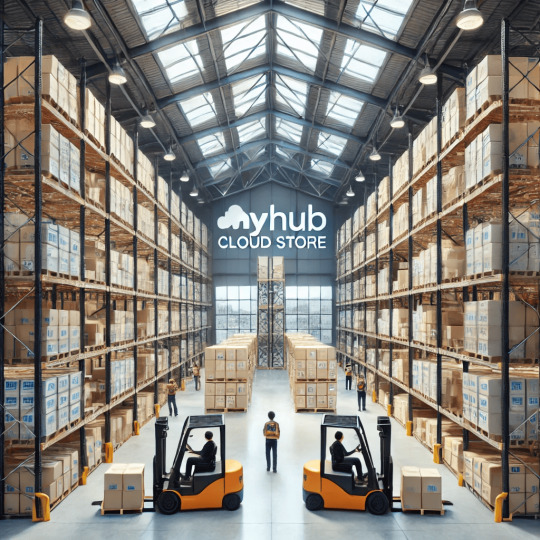
Here’s why:
1. Flexi-rental Plans Meeting Your Perfection MyHub Cloud Store gives businesses flexibility in scaling up or down depending on their needs; it offers different warehouse rental options and makes sure that companies do not get locked into long-term leases-an exercise on saving costs, especially for businesses going through seasonal fluctuations or organic growth patterns. Pay-as-you-use plans entitle you to pay just for the months or years needed, depending on how much you need.
2. A 100% SKU Visibility Enables Efficient Inventory Management One of the biggest headaches in warehousing for businesses is tracking of their inventory. MyHub Cloud Store eliminates this headache by giving 100% SKU visibility, allowing you to track your inventory in real-time. Such transparency assures that your stock is always in an account, reducing chances of overstocking or even stockouts. Businesses can also minimize waste due to the intelligent use of advanced inventory management systems to make efficient use of storage spaces.
3. Real Time Tracking and Advanced Technology Integration Manual warehouse activities are, however, a thing of the past in MyHub Cloud Store. It offers businesses the benefits of real-time tracking and seamless integration with WMS, which manages sophisticated warehouse management systems. This is easy to administer while providing the insights into stock movement, which enables businesses to make the right decisions on data. The use of technologies such as IoT and AI-driven software will make the operational process efficient while minimizing human error.
4. Strategically Located Warehouses in Hyderabad Hyderabad is a prime destination among India’s fastest-growing cities and the most significant logistics hub. Overall, myHub Cloud Store warehouses are placed strategically all over the city, addressing easy access to key commercial and transport areas. For that reason, this prime location allows businesses to reduce their average transit times and cut costs associated with transportation, thus shortening delivery times for customers.
5. On-Demand Delivery Services MyHub Cloud Store also offers business on-demand delivery services, so the merchandise will be picked and packed quickly to ship over to clients’ destinations. E-commerce will need this service highly fulfilled fast to meet customer expectations. MyHub Cloud Store, by offering delivery solutions, keeps small-scale businesses competitive in this ever-quickened market today.
6. Scalable Storage Solutions for Businesses of All Sizes Whether you just begin with your business, require only a small amount of storage space, or you are a large enterprise requiring great amounts of storage, MyHub Cloud Store has scalable storage for all sizes of businesses. Customized storage offers businesses easy scale-up or scale-down according to demand and, hence, if the business needs change, the cost for excess space is brought down.
7. Cost-effective and Hassle-Free Besides, one of the most significant advantages of renting a warehouse through MyHub Cloud Store is cost-efficiency. Warehouse rentals remove the enormous capital expenditures accumulated from building or purchasing storage facilities. Secondly, all maintenance, security, and operational costs are taken care of by MyHub Cloud Store, leaving businesses free to focus on growth instead of warehouse management.
8. Top-notch security and Safety No business wishes for unsafe and valuable store items. Ensuring safety is a critical function of any business. The MyHub Cloud Store secures your inventory with 24/7 surveillance, state-of-the-art security systems, and regular audits. A secure environment offered by MyHub Cloud Store can help businesses sleep sound at night knowing that their products are safer from theft, damage, or loss.
9. Eco-friendly warehousing Sustainability is the aim, so MyHub Cloud Store’s focus is fully centered on green warehousing. For example, energy-efficient lighting reduces energy consumption, and numerous waste-reduction practices are applied to these warehouses to minimize harmful impacts on the environment as much as possible. For business houses that wish to improve their CSR profiles, partnering with a warehouse company such as MyHub Cloud Store can be a strategic advantage. 10. Tailored Solutions for Specific Industry Requirements Every industry has peculiar warehousing needs, and MyHub Cloud Store is capable of understanding the needs as they offer tailored solutions that suit all sorts of requirements, like cold storage of perishable goods, temperature control, or specialized storage for fragile items. Their services ensure that your products are stored under optimum conditions, thereby upholding quality and value.
Conclusion Among warehouse rentals in Hyderabad, MyHub Cloud Store offers you the widest range of services that precisely meet the specific needs of a new generation of business. They provide very flexible rental plans, cutting-edge technology, and pledged services in the areas of security and sustainability to optimize every company’s storage and distribution operations.
We’re ready to take your storage management to the next level; call us today at MyHub Cloud Store to learn more about our warehouse rental services and how we can help your business grow.
#WarehouseForRent#StorageSolutions#FlexibleWarehousing#BusinessStorage#WarehouseSpace#ScalableStorage
0 notes
Text
Cloud data management is essential for businesses in today’s competitive landscape. By 2028, cloud computing will be vital for business success, providing accessibility, scalability, cost efficiency, security, and disaster recovery. Key trends shaping the future of cloud data management include AI and machine learning integration for predictive analytics, hybrid cloud solutions blending on-premises and cloud systems, edge computing for real-time data processing, and quantum storage for enhanced data capacity and security. Additionally, advanced data governance will help businesses comply with regulations like GDPR and HIPAA. Stigasoft offers expert cloud solutions, ensuring scalability, security, and efficiency for data-driven success. Contact them today to explore how their services can optimize your data management.
If you want to get complete information related to this topic click HERE.
#cloud data management#DataStorageSolutions#BusinessDataStrategy#datasecurity#scalablestorage#cloud services#AIinCloud#cloudtechnology#futureofdata#CostEfficientCloud#CloudForBusiness#cloud security#Stigasoft
0 notes
Text
💾 Storage Just Got Serious — SAN Market to hit $32.5B by 2034, up from $19.4B in 2024 (5.3% CAGR 🔗)
Storage Area Network (SAN) is a high-speed network that provides access to consolidated block-level storage, allowing multiple servers to connect to and use shared storage resources efficiently. SANs are designed for high availability, performance, and scalability, making them ideal for enterprise environments with large volumes of data and critical applications. They help centralize storage management, improve backup and disaster recovery processes, and minimize downtime.
To Request Sample Report : https://www.globalinsightservices.com/request-sample/?id=GIS24058 &utm_source=SnehaPatil&utm_medium=Article
By separating storage from the local environment, SANs increase flexibility and enable better resource utilization. These systems support high-throughput applications such as databases, virtual machines, and analytics platforms. As organizations continue to scale and transition to hybrid and multi-cloud architectures, SAN solutions are evolving with features like NVMe over Fabrics, software-defined storage, and enhanced automation. Additionally, SANs play a crucial role in cybersecurity and compliance by providing secure access controls, encryption, and audit trails. In the age of big data and digital transformation, SAN technology remains a vital backbone for enterprise storage strategies, ensuring data is always available, protected, and accessible.
#storageareanetwork #san #storagetechnology #datainfrastructure #enterprisestorage #blockstorage #highavailability #disasterrecovery #datacenter #cloudintegration #nvmeoverfabrics #softwaredefinedstorage #hybridcloud #multicloud #storagesolutions #dataarchitecture #virtualmachines #securestorage #scalablestorage #storagemanagement #bigdata #cybersecurity #storageautomation #datasecurity #cloudstorage #techinfrastructure #storagenetworking #storageoptimization #digitaltransformation #storageperformance #storagebackup #storagegrowth #dataprotection #storageindustry #storagedeployment #techstack
Research Scope:
· Estimates and forecast the overall market size for the total market, across type, application, and region
· Detailed information and key takeaways on qualitative and quantitative trends, dynamics, business framework, competitive landscape, and company profiling
· Identify factors influencing market growth and challenges, opportunities, drivers, and restraints
· Identify factors that could limit company participation in identified international markets to help properly calibrate market share expectations and growth rates
· Trace and evaluate key development strategies like acquisitions, product launches, mergers, collaborations, business expansions, agreements, partnerships, and R&D activities
About Us:
Global Insight Services (GIS) is a leading multi-industry market research firm headquartered in Delaware, US. We are committed to providing our clients with highest quality data, analysis, and tools to meet all their market research needs. With GIS, you can be assured of the quality of the deliverables, robust & transparent research methodology, and superior service.
Contact Us:
Global Insight Services LLC 16192, Coastal Highway, Lewes DE 19958 E-mail: [email protected] Phone: +1–833–761–1700 Website: https://www.globalinsightservices.com/
0 notes
Text
Iron Flow Batteries: Sustainable Energy Storage Solutions
Iron flow batteries represent a promising innovation in energy storage technology, leveraging the chemical properties of iron to provide scalable and efficient solutions for storing renewable energy. Unlike traditional lithium-ion batteries, iron flow batteries use iron-based electrolytes that are abundant, non-toxic, and inexpensive, making them highly sustainable and environmentally friendly.
These batteries operate by circulating iron ions between positive and negative electrodes, storing and releasing energy as needed. This design allows for deep cycling without degradation, ensuring long-term reliability and cost-effectiveness for grid-scale applications. Iron flow batteries excel in storing intermittent renewable energy sources like solar and wind power, helping to stabilize the grid by providing reliable backup power and smoothing out fluctuations in supply and demand. They also offer flexibility in deployment, ranging from small-scale residential installations to large industrial and utility-scale projects. Innovations in electrode design and electrolyte formulation continue to improve the efficiency and performance of iron flow batteries, driving down costs and expanding their market potential. As the world seeks sustainable energy storage solutions to support the transition to a low-carbon future, iron flow batteries are poised to play a significant role in enhancing grid resilience and promoting renewable energy integration. #IronFlowBattery #EnergyStorage #RenewableEnergy #GridScale #SustainableTechnology #CleanEnergy #EnergyInnovation #BatteryTechnology #IronElectrolyte #GridResilience #RenewablesIntegration #GreenEnergy #StorageSolutions #ElectrochemicalStorage #LowCarbonFuture #EnergyTransition #IronIon #EnvironmentalImpact #ScalableStorage #Innovation
0 notes
Text
Balancing Cost and Convenience in Storage Solutions
When it comes to managing storage needs, businesses of all sizes must find the perfect balance between cost and convenience. While it’s tempting to cut costs by choosing the least expensive option, it's essential to factor in the convenience and efficiency that a storage solution provides. Striking the right balance is critical to optimizing operations while maintaining budgetary control. Here are some practical tips to achieve this balance in your storage strategy.

1. Evaluate Your Inventory Needs
The first step in finding the ideal storage solution is to assess your inventory volume and storage requirements. Understanding how much space you need—and how often your storage requirements fluctuate—will help you determine whether short-term or long-term storage options are most suitable. Flexible storage solutions offer both the convenience of quick access and the ability to scale up or down as necessary.
2. Explore Short-Term Storage Options
For businesses that don’t have a consistent need for large storage spaces, short-term warehousing can be a cost-effective choice. Renting space only when you need it can significantly reduce your overall storage costs while providing the convenience of not having to worry about unused space sitting idle. This approach is particularly beneficial for businesses with seasonal fluctuations or irregular inventory needs.

3. Maximize Space Utilization
Efficient use of storage space can have a direct impact on your overall storage costs. By investing in inventory management software or using storage solutions that help you organize and optimize available space, you can ensure you're making the most of every square foot. Whether it's through high-density shelving or better tracking systems, optimizing storage not only reduces costs but also improves convenience by making it easier to access products.
4. Consider Shared Storage Solutions
Shared warehouse solutions offer an excellent opportunity to balance cost and convenience. By sharing warehouse space with other businesses, you can significantly reduce overhead costs. Shared storage allows you to access the same benefits as larger companies, such as security, climate control, and inventory management, without the high cost of renting an entire facility. Plus, shared spaces often offer more flexible terms, which can make them even more convenient.
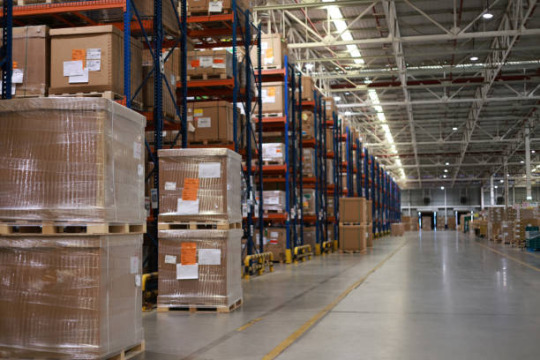
5. Choose a Location That Reduces Operational Costs
The location of your storage facility is a critical factor in both cost and convenience. Opting for a strategic warehouse location that’s close to suppliers, customers, or transportation hubs can minimize logistics costs and improve delivery speed. A well-located warehouse ensures that your products can be stored efficiently while reducing the time and cost of distribution.
#SmallBusiness#AffordableWarehousing#InventoryManagement#WarehouseSolutions#ScalableStorage#ShortTermLeases#WarehouseEfficiency#SharedWarehousing#CostSavingStrategies#Logistics#WarehouseLocation#InventoryTracking#BusinessGrowth#StorageOptimization#WarehousingTips#ShippingCosts#FlexibleStorage#SupplyChainManagement#StorageSolutions#TemperatureControl#HumidityControl#PerishableGoods#ElectronicsStorage#FragileMaterials#PackagingSolutions#RealTimeMonitoring#QualityPreservation#ProductProtection#ClimateControl#StorageFacility
0 notes
Text
Tips for Storing Goods That Require Specific Conditions
Storing goods that require specific conditions can be a challenge, but with the right strategies and storage solutions, businesses can ensure their products remain in optimal condition. Whether you're storing perishable items, sensitive electronics, or fragile materials, maintaining the right environment is key to preserving product quality and avoiding costly damage. Below are some essential tips for storing goods that require specific conditions.
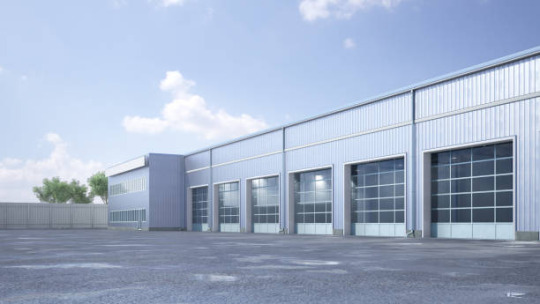
1. Understand the Ideal Storage Conditions for Each Product
Different types of goods require different storage conditions. For example, perishable goods like food and pharmaceuticals need temperature control to prevent spoilage. Electronics may require humidity control to prevent corrosion. Understanding the specific needs of your goods is the first step in choosing the right storage solution. Customized storage solutions can be designed based on the specific requirements of your products, ensuring that they are stored in the ideal environment.
2. Choose the Right Storage Facility
Not all storage facilities are equipped to handle goods that require specific conditions. When selecting a warehouse or storage unit, make sure it has the necessary features such as temperature control, humidity regulation, and secure storage options. Temperature-controlled storage is essential for sensitive goods like pharmaceuticals, food, and chemicals, while climate-controlled spaces may be necessary for electronics and artwork.
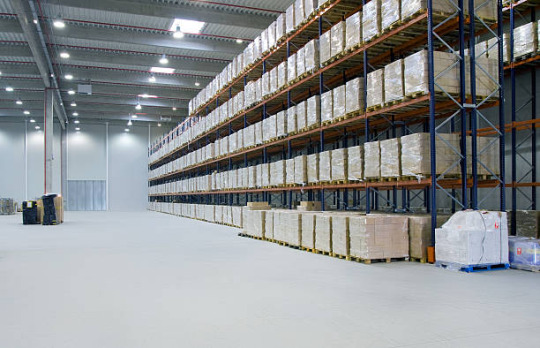
3. Use Proper Packaging
For items that require specific conditions, the packaging is just as important as the storage space. High-quality, insulated packaging can help protect goods from temperature fluctuations and humidity changes. For example, temperature-sensitive products may benefit from insulated boxes or vacuum-sealed bags that provide additional protection. Insulated packaging options ensure that products stay within their required temperature ranges, even during transportation or while in storage.
4. Implement Real-Time Monitoring and Control Systems
To ensure that your goods are always stored in the correct environment, consider using real-time monitoring systems that track temperature, humidity, and other environmental factors. These systems can provide alerts when conditions fall outside of the acceptable range, allowing you to take immediate action before products are compromised. Automated tracking solutions can provide continuous oversight and peace of mind.
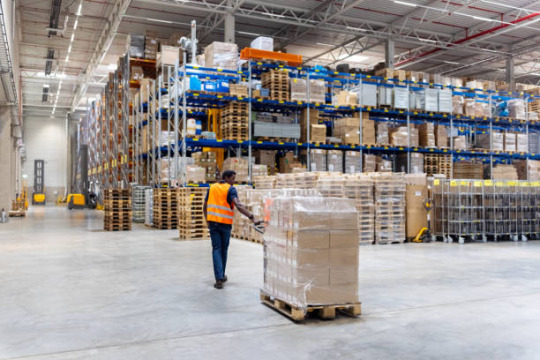
5. Conduct Regular Inspections and Audits
Even with the best storage solutions in place, it’s important to perform regular inspections and audits to ensure that everything is operating as it should. Regular checks can identify any potential issues with temperature control, humidity regulation, or packaging. Routine audits also help keep track of inventory and ensure that all items are stored according to their specific requirements.
Storing goods that require specific conditions doesn’t have to be complicated. By selecting the right storage facility, using proper packaging, and implementing robust monitoring systems, you can ensure that your products remain in perfect condition. Whether you’re dealing with perishable food items, sensitive electronics, or fragile materials, the right storage solutions will help protect your assets and maintain the quality of your products. Take advantage of specialized storage solutions to meet your unique business needs and ensure your goods are always stored in optimal conditions.
#StorageSolutions#TemperatureControl#HumidityControl#PerishableGoods#ElectronicsStorage#FragileMaterials#PackagingSolutions#RealTimeMonitoring#InventoryManagement#QualityPreservation#ProductProtection#ClimateControl#StorageFacility#CustomizedStorage#ProductInspection#AutomatedTracking#StorageAudits#SensitiveItems#StorageConditions#SupplyChainManagement#ColdStorage#PharmaceuticalStorage#ProductFreshness#RegulatoryCompliance#SpoilagePrevention#ScalableStorage#SensitiveProductStorage#BusinessGrowth#FoodStorage#ColdStorageSolutions
0 notes
Text
How to Choose the Right Warehouse for Your Business Needs
Selecting the right warehouse is crucial for the success of any business, whether you’re dealing with physical goods or handling high-demand e-commerce orders. The right warehouse can streamline your operations, improve inventory management, and enhance your overall customer satisfaction. On the other hand, choosing the wrong warehouse can lead to unnecessary expenses, delays, and inefficiencies.

In this article, we’ll explore the essential factors you need to consider when selecting a warehouse that aligns with your business needs.
1. Location, Location, Location
The location of your warehouse can have a significant impact on your overall business operations, including shipping times, costs, and efficiency. A well-located warehouse reduces shipping times to your customers and allows for more cost-effective transportation.
When evaluating the location, consider factors such as:
Proximity to customers: A warehouse located closer to your customer base can result in faster delivery and lower shipping costs.
Transportation links: Ensure that the warehouse is easily accessible by road, rail, or air for quicker and more reliable shipments. A warehouse near major highways or shipping hubs can cut transportation costs.
Access to labor: Depending on the region, availability of skilled labor can be a critical factor, especially if you require specialized tasks like picking, packing, or quality control.
If you're looking for a centralized warehouse that can cater to multiple regions, choosing a location with good connectivity will be crucial for ensuring smooth operations.

2. Warehouse Size and Layout
The size and layout of your warehouse should match your storage needs. Businesses that deal with a wide variety of products, or have unpredictable inventory levels, may need more space, while others with smaller or more standardized products may require less.
Consider the following:
Available storage space: Ensure that the warehouse offers enough space to accommodate your current and future inventory needs.
Flexible storage options: Look for a warehouse that can offer scalable storage solutions to accommodate seasonal fluctuations or sudden spikes in demand. Many modern warehouses offer on-demand storage, allowing businesses to scale their space up or down depending on needs.
Efficient layout: A well-organized warehouse layout helps streamline operations and reduce inefficiencies. This includes areas for inventory reception, storage, picking, packing, and shipping. A customized layout tailored to your workflow can improve speed and accuracy.

3. Technology and Inventory Management Systems
In today’s fast-paced business world, having the right technology can make or break warehouse operations. A warehouse that uses advanced inventory management systems allows you to track your products in real-time, automate processes, and maintain accurate stock levels.
When evaluating a warehouse’s technology, consider the following:
Warehouse Management System (WMS): Does the warehouse use an effective WMS? This system helps track inventory, manage orders, and optimize the storage process.
Real-time updates: Ensure that the warehouse can provide real-time data on stock levels and order fulfillment status. This helps you stay informed and make smarter business decisions.
Automation and Robotics: Some modern warehouses use automation tools like robots for picking and sorting inventory. These technologies can improve efficiency and reduce human error.
If a warehouse offers advanced technology, you’ll be able to improve your order fulfillment times and better manage your inventory, leading to higher customer satisfaction.
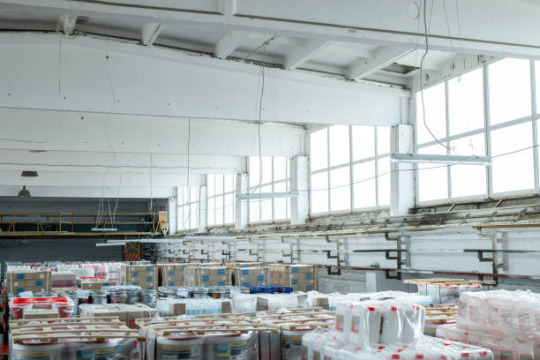
4. Security and Safety
The security of your products is paramount, especially if you’re storing high-value or sensitive items. When choosing a warehouse, make sure that it has robust security measures in place to protect your inventory from theft, damage, or loss.
Look for:
Surveillance systems: Ensure that the warehouse has comprehensive CCTV coverage and alarm systems in place.
Controlled access: Make sure that only authorized personnel have access to your storage areas. This may include security guards, access badges, or biometric authentication.
Safety protocols: Check if the warehouse adheres to safety guidelines and regulations, including fire safety, proper handling of hazardous materials, and general warehouse safety protocols.
Having a secure warehouse will protect your inventory and provide peace of mind as your business grows.
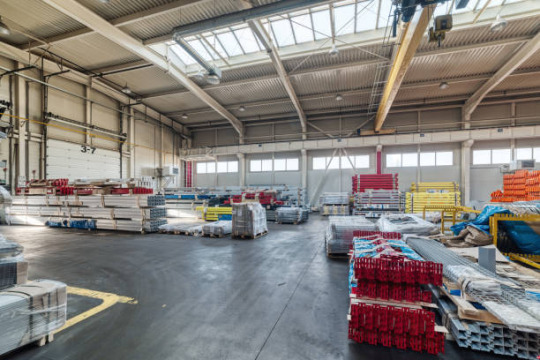
5. Cost and Flexibility
Warehousing costs can vary greatly depending on location, services, and space requirements. As a small or growing business, it’s essential to find a warehouse that fits within your budget while still providing the services and flexibility you need.
Understand pricing models: Make sure you fully understand the cost structure of the warehouse. Are you paying for a fixed amount of space, or is the cost based on how much you actually use? Many warehouses now offer on-demand warehousing solutions, allowing businesses to pay only for the space and services they need.
Hidden fees: Be aware of additional fees, such as shipping costs, handling charges, and extra services. Always factor these into your cost calculations.
Flexible contracts: A good warehouse provider should offer flexible contract terms that allow you to scale up or down depending on your business growth.
Choosing a warehouse that offers both competitive pricing and flexibility can help keep your operational costs in check.
Choosing the right warehouse is more than just about finding a place to store your goods. It’s about improving your operational efficiency, cutting costs, and supporting your overall business strategy. By carefully considering factors like location, size, technology, security, and cost, you can make an informed decision that aligns with your business goals.
When looking for cost-effective warehousing solutions or flexible storage options, make sure to choose a warehouse that fits both your current needs and future growth.
#WarehouseSelection#WarehousingSolutions#BusinessLogistics#InventoryManagement#WarehouseLocation#StorageSolutions#OperationalEfficiency#WarehouseTechnology#InventoryTracking#FlexibleStorage#WarehouseManagementSystem#SecureWarehousing#BusinessGrowth#CostEffectiveWarehousing#SupplyChainOptimization#CustomerSatisfaction#RealTimeInventory#WarehouseSafety#ScalableStorage#OrderFulfillment
0 notes